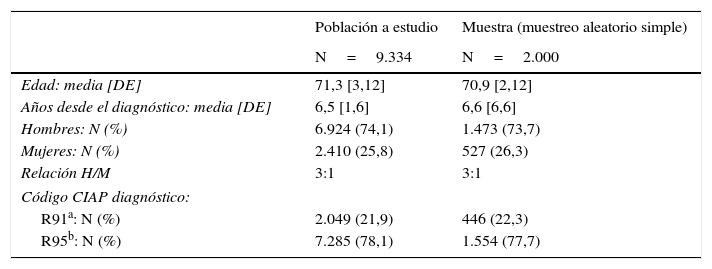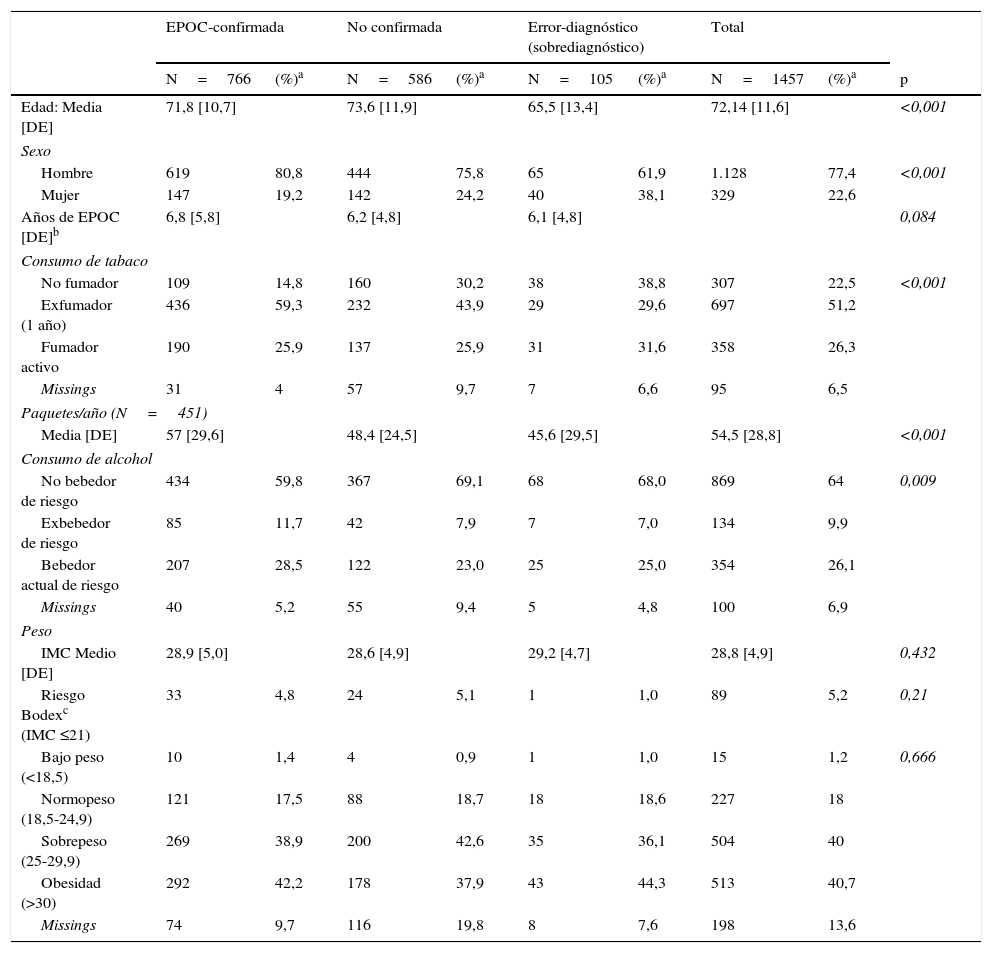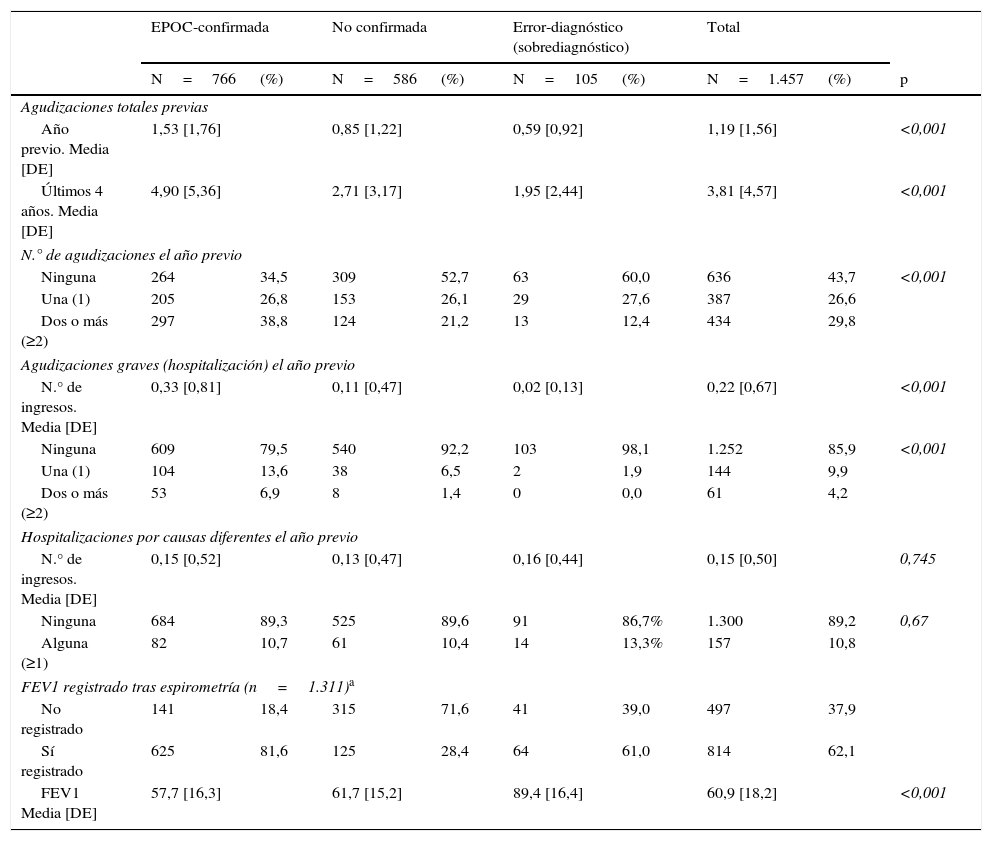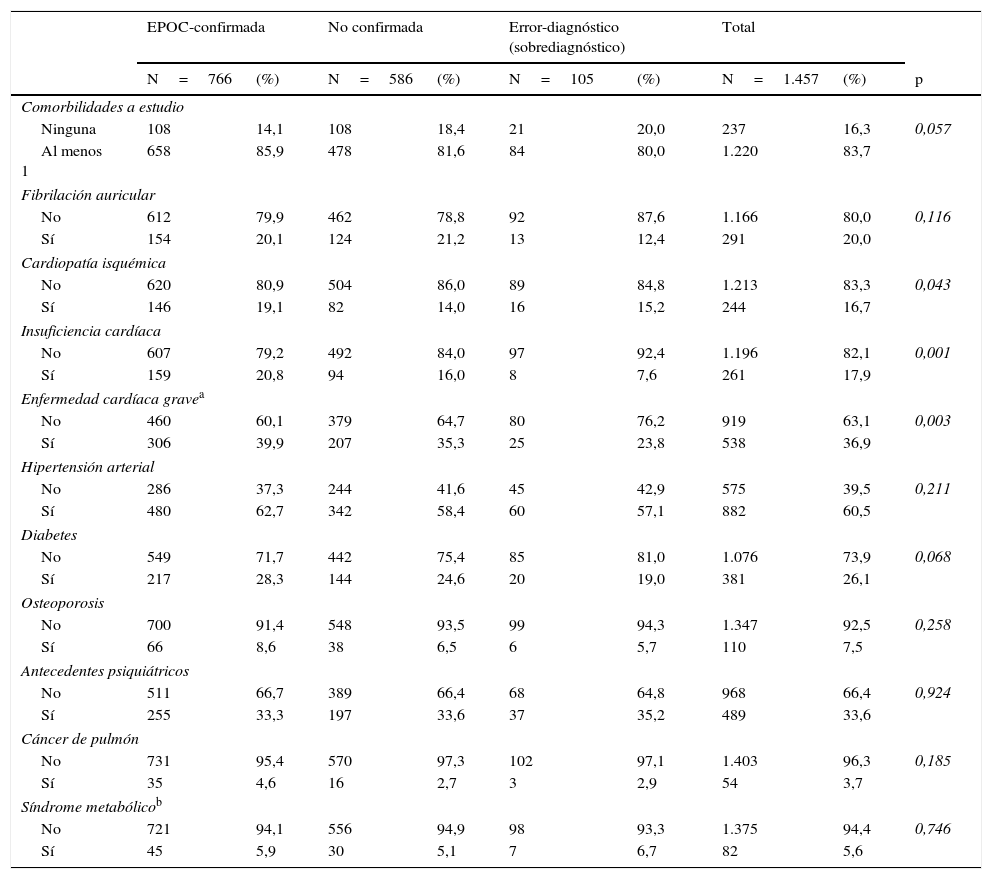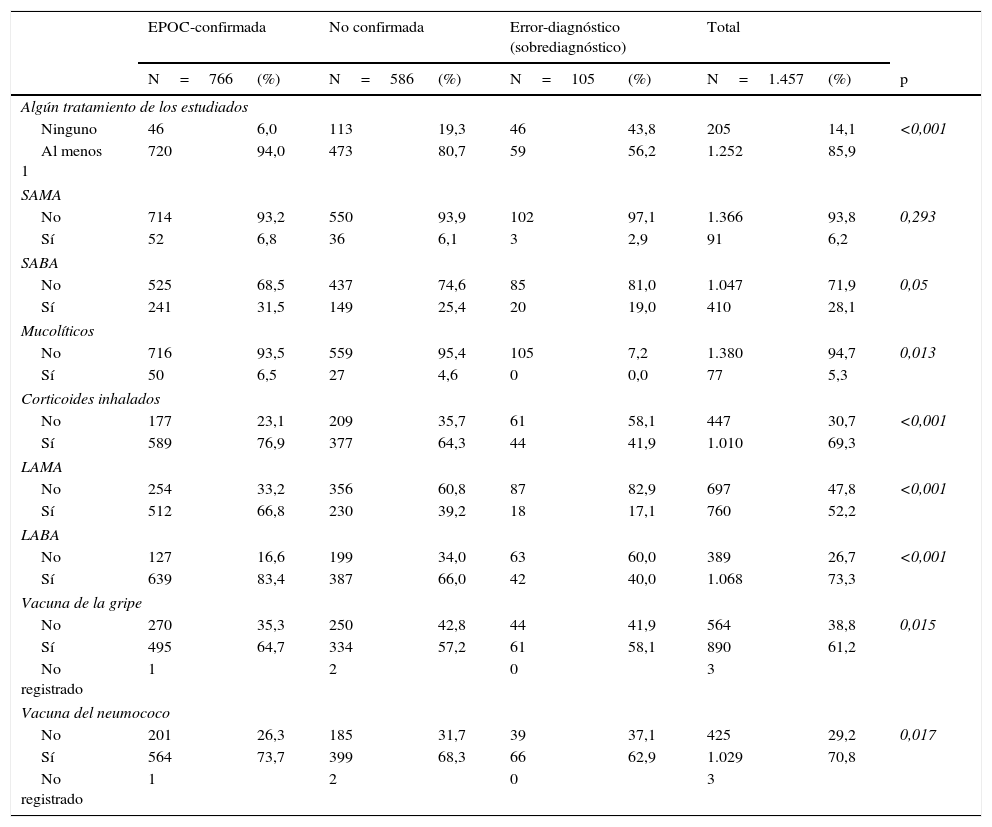Una de las principales limitaciones en los estudios sobre la EPOC en bases de datos sanitarias podría ser la baja calidad de la información contenida en ellas. Nuestro principal objetivo fue evaluar la fiabilidad del diagnóstico de EPOC en Atención Primaria. En segundo término, describir las características de los pacientes en función de la conformidad del diagnóstico.
Material y métodosEstudio transversal usando bases de datos sanitarias de Cantabria. De una muestra preseleccionada se obtuvieron 1.457 pacientes etiquetados con EPOC en la historia clínica. Se verificó el diagnóstico en las mismas bases de datos y se crearon 3 grupos: EPOC-confirmada, EPOC no confirmada-no descartada y error-diagnóstico. Fueron recogidas variables descriptivas, clínicas, comorbilidades y tratamientos.
ResultadosEl diagnóstico de EPOC fue confirmado en 766 pacientes: 52,6% (IC 95%: 50,0-55,2). La frecuencia del error-diagnóstico fue del 7,2% (IC 95%: 5,8-8,6). El porcentaje de este sobrediagnóstico fue mayor en mujeres. La edad, el hábito tabáquico, la severidad en función del FEV1 y la frecuencia y gravedad de las agudizaciones fueron mayores en el grupo de EPOC-confirmada (p<0,001). En los errores-diagnósticos se registraron una media de 1,95 episodios en los últimos 4 años. Los corticoides inhalados estaban prescritos en el 76,9% de los pacientes con EPOC-confirmada y en el 41,9% de los errores-diagnósticos.
ConclusionesLa fiabilidad del registro del diagnóstico de EPOC fue deficiente, con solo un 52,6% de certeza diagnóstica. En todos los grupos constó la prescripción de tratamientos para la EPOC de forma estable, destacando el uso de corticoides inhalados.
One of main limitations in studies of COPD in health databases could be the low quality of the information. Our first aim was evaluate reliability of the registry of COPD diagnosis register in Primary Care. A description and comparison is also presented of the characteristics of the patients according to the diagnostic confirmation.
Material and methodsA cross-sectional study using healthcare databases of Cantabria. A pre-selected sample of 1,457 patients was obtained in which COPD diagnosis was specifically registered. COPD confirmation was classified into confirmed COPD, not confirmed-not rejected COPD, and diagnostic error (over-diagnosis). Descriptive and clinical characteristics, comorbidities, and treatments were collected in each group.
ResultsCOPD was confirmed in 766 patients: 52.6% (95%CI: 49.9-55.2). Prevalence of over-diagnosis was 7.2% (95%CI: 5.9-8.6). There were statistically significant gender differences. In the COPD confirmed group age, tobacco consumption and severity according to FEV1 was higher. An average of 1.95 bronchial exacerbations during the last 4years was observed among diagnostic errors. Inhaled corticosteroids were prescribed in 74.9% of COPD confirmed patients, and in 41.9% of over-diagnosed patients.
ConclusionsThe reliability of the COPD register was deficient, with only 52.6% with a confirmed diagnosis. Stable treatment for COPD was prescribed in all groups, highlighting the use of inhaled corticosteroids.
Artículo
Diríjase al área privada de socios de la web de la SEMERGEN, (https://www.semergen.es/index.php?seccion=biblioteca&subSeccion=revistaSEMERGEN ) y autentifíquese.
Comprando el artículo el PDF del mismo podrá ser descargado
Precio 19,34 €
Comprar ahora







